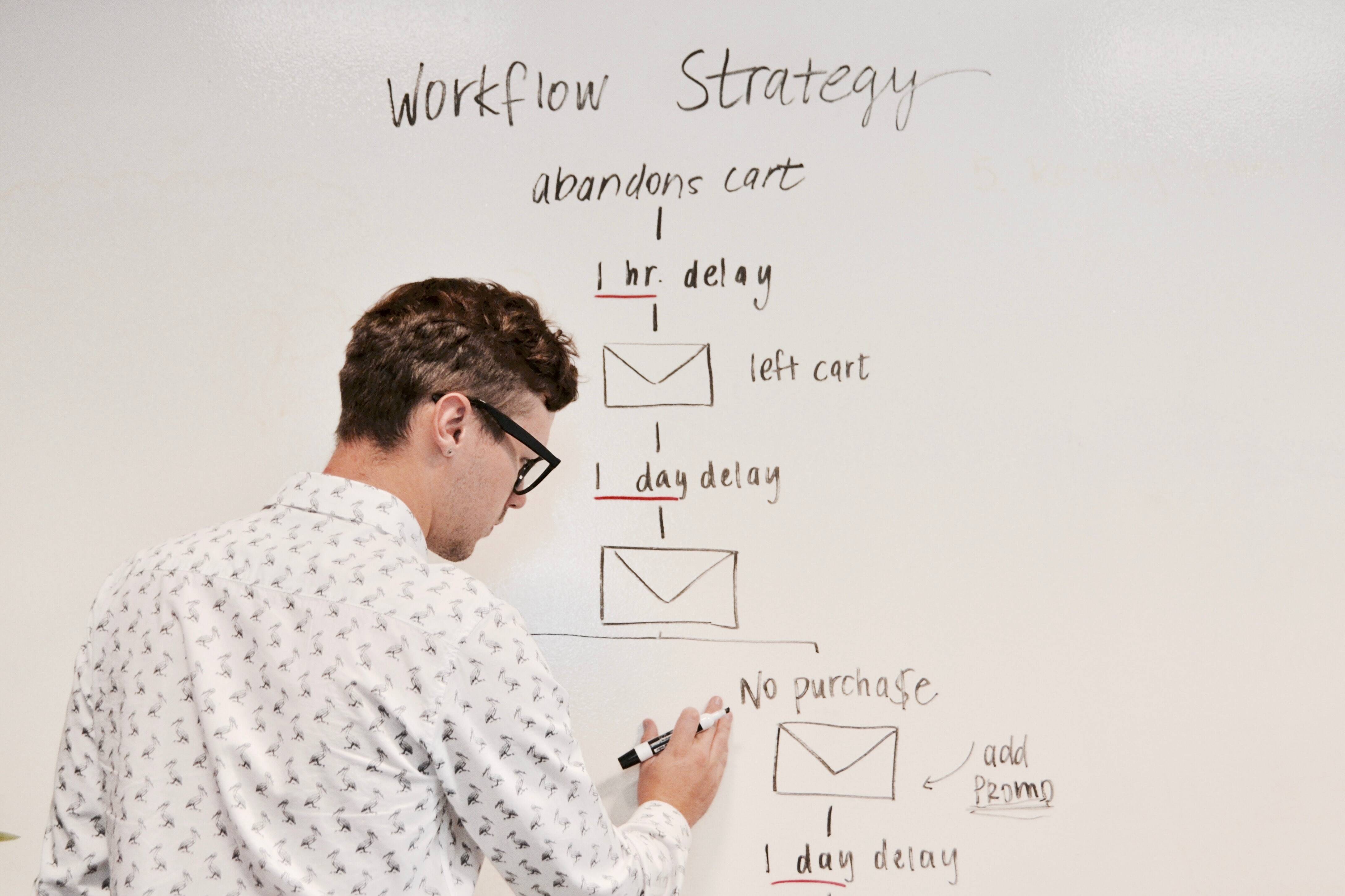Top 5 Expert Tips for Building Successful Customer Journeys
by Marion Traa on 1.4.2020
.jpg)
In an effort to better respond to rising customer demands for seamless cross-channel journeys, we have seen a significant rise in customer journey mapping over the last few years. Forrester research shows that more than 65% of marketing professionals map existing customer experiences. In fact, according to the 2019 Gartner Customer Experience Management Survey, businesses that have and use customer journey maps are twice as likely to outperform competitors than those that don’t.
But mapping the ideal customer journey on a whiteboard or a PowerPoint presentation is often quite different from the journeys that consumers make in real life. In reality, most journeys are not linear but happen in spurs, with longer lengths of time in between.

So how can you ensure that you’re creating journeys that actually map the steps that your customers really make?
#1 Use your best performing cases as a starting point
Typically, before starting creating customer journeys, marketers need to make the transition from working in separate campaigns (or audiences) to building fully integrated journeys.
In large organizations, marketers could be dealing with more than 100 campaigns simultaneously. At that point, keeping a central overview of the customer becomes challenging and moving from campaigns to journeys can be overwhelming.
Pro-tip: Don't start by reinventing the wheel
“A good starting point is to look at the use cases that serve the same audience and goal, and select the ones that perform best,” advises Solutions Consultant Marion Traa. “When starting to work with customer journeys, marketers tend to want to come up with brand new use cases. In our experience, it’s best to start small and create simple journeys by using the use cases that have already proven to work well.”
Winning scenario
- You’ve got an email campaign and a related retargeting campaign on Google. Both use the same audience and serve the same final goal, but in practice, they are split into separate campaigns. By combining these two campaigns into a single customer journey you immediately gain:
- An overview of the customer journey: You can see what works best and you can easily identify where customers get stuck and take actions to optimize the process.
- An operational win: By combining the campaigns into a single journey with one goal, you will get unified performance metrics instead of having to keep track of metrics on different platforms.

#2 Keep it simple and be data-driven
Most customer journeys begin on a whiteboard with post-it notes, a PowerPoint slide, or in some cases, using our journey mapping tool. While these are all great options to plan your customer journeys, you should always use data to validate your choices.
Data-driven audience building
You've mapped a customer journey and you end up with 5 steps until the goal is reached. With every step, your audience gets smaller as people fall out of the journey. In the last step, you set up a campaign to target only this specific group of people.
While being specific is a good practice, if you narrow the audience too much, you might end up with an insufficient number of people with which to run a campaign. Keep in mind that paid media requires at least 1000 profiles in order to be activated. On top of that, creating a whole campaign for a small group of people might be too costly — you may be better off using those resources to reach a bigger audience and have a larger impact.

Pro-tip: Start with broader criteria
“Start by setting up shorter journeys (2-3 steps) and applying broad criteria,” recommends Solutions Consultant Tom Schreurs. “Then, use your analytics tool or CRM to check the number of people in your audience. If the audience is too small, you can either adjust the criteria to expand your target group or you might reconsider starting this journey in general and try out a journey with a larger audience."
#3 Target only the relevant audience
Defining your target group is one of the first steps in building a customer journey. Knowing who to target with your messaging is essential, but what marketers often forget is that their audience isn't static — on the contrary, audience behavior typically changes rather quickly.
“Some people will lose interest in your product or service; others will buy from the competitor and third, hopefully the majority, will follow your journey and will convert," explains Tom. "Yet in many cases, we see that retargeting campaigns are still going on long after the customer has expressed interest and even after conversion has taken place."
Apart from causing customer frustration, this also leads to wasted media spend that could have been saved or spent on the people who are currently interested in a product or service.
How can you make sure that you reach only the people who are still interested in your brand?
Pro-tip: Avoid unnecessary retargeting
“Avoid unnecessary retargeting by implementing time-based ruling in your journey. In practice, this means setting a limit to your retargeting campaigns so that you retarget only people who have recently interacted with your brand,” advises Tom.
“Another easy win is to exclude profiles who have reached the goal of the journey from re-entering your journey again. Simply add the “Goal” as an exclusion criterion from the starting trigger of the journey, and you won’t spam your customers ever again.”
#4 Plan always-on journeys
From a consumer perspective, buying a new product or subscribing for a service can happen at any moment of the day.
“Consumers are “always on," but traditional brands still think in campaigns, which significantly limits communication to specific products and time frames,” says Marion. “With journey orchestration, marketers finally have the means to look at the whole funnel and create always-on journeys.”
Pro-tip: Start with current recurring customer scenarios
Start creating always-on journeys based on recurring situations that apply to all of your customers; some examples of include welcoming new customers or offering loyalty programs to customers whose contract is about to expire.
For more inspiration, check out how our customer Evi created a dynamic, personalized customer journey to nurture prospects through the specific phases of their Evi customer journey.
#5 Ensure consistent messaging at every step of the journey
One of the great advantages of working with customer journeys over campaigns is that it encourages marketers to think about the customer experience as a whole and consider all customer touchpoints.
After carefully defining your audience and channels, it’s important to make your messaging as relevant and personalized as possible, or you risk losing customers due to unclear and/or inconsistent communication.
Here's the wrong kind of journey
- You work at a mobile operator and you want your family phone package customers to upgrade with a TV package.
- You set up a journey that is activated when two or more family members get a mobile subscription.
- You target your audience with a personalized email with a special offer, and in the email, you include a link to your website.
- However, the link in the email leads to a generic page of all possible TV packages. At that point, it’s very likely that your customers will get confused and drop out of the journey.

Pro-tip: Set up specific personalization rules at each step of your customer journey so that your messaging remains consistent. This way your customers will always receive personalized messaging based on their most recent touchpoint.
We hope that these tips were useful and will help you when you start building your next customer journey.
You May Also Like
These Related Stories

How to Design Journey Orchestration Use Cases that Perform

Getting Ready for the Next Level of Customer Journeys with Relay42 Automated ML (1/2)



